A round-up of the most important works of art to have recently entered public collections
Wadsworth Atheneum, Hartford
Striding Mars (c. 1565–70), Giambologna
One of the earliest high-ticket sales to be announced at TEFAF Maastricht, which took place in March this year, was that of Giambologna’s magnificent bronze Striding Mars, which was sold by Stuart Lochhead Sculpture for a reported $4m. The buyer has now been revealed as the Wadsworth Atheneum in Connecticut, which is adding to its already significant collection of European decorative art, including sculptures by Pietro Francavilla and other artists who were heavily influenced by Giambologna and produced work in the same Mannerist tradition as he did. Original works by the Italian artist – one of the leading court sculptors of the Medici – rarely appear on the market, and this bronze, one of a group of very few early casts of the sculpture made during the artist’s lifetime (and before he established his own foundry), is in remarkable condition, having undergone extensive cleaning and restoration in 2000. It shows the god of war striding into combat, left arm twisted out in front of him and right arm clutching the handle of a blade, with his left heel slightly raised to give a sense of dynamism.
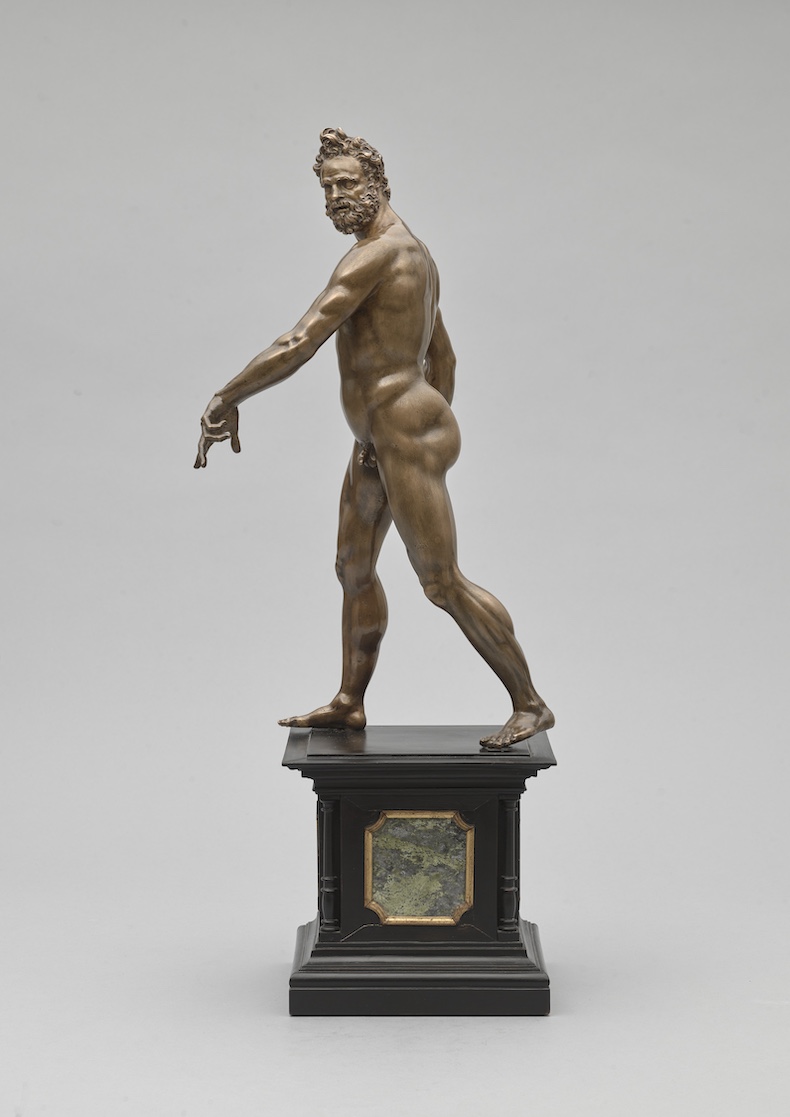
Striding Mars (modelled c. 1565–70; cast c. 1580), Giambologna. Photo: courtesy Wadsworth Atheneum Museum of Art
National Gallery, London
La Psyché (The Full-length Mirror) (c. 1869‒70), Eva Gonzalès
The National Gallery holds a collection of almost 2,500 paintings spanning the 13th to the early 20th centuries. Among them, only 21 are by women, a total that has risen to 22 with the acquisition of La Psyché by Eva Gonzalès, an enigmatic painting in muted colours which depicts a woman, her back turned to the viewer, gazing into a standing mirror. Interest in women Impressionists such as Mary Cassatt has been growing in recent years and Gonzalès – though not part of the circle who exhibited at the first Impressionist exhibition in 1874 – counts among them, her style bearing striking similarities to Degas, Morisot and, above all, Manet, under whom she studied for a time. Gonzalès died in childbirth in 1883 at the age of 34; as a result, her paintings are few and far between and La Psyché has become only the second of her works in a UK public collection. It does, however, join a Manet portrait of her in the National Gallery’s collection.
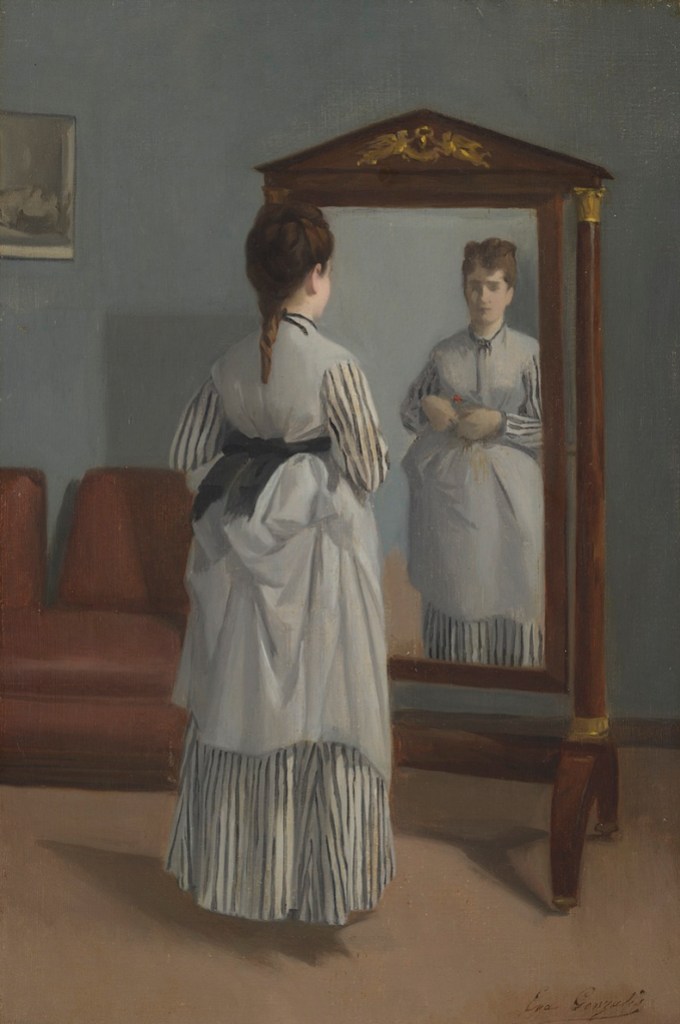
La Psyché (The Full-length Mirror) (c. 1869–70), Eva Gonzalès. Photo: © The National Gallery, London
J. Paul Getty Museum, Los Angeles
Portrait of a Woman (1818), Sophie Frémiet; A Drinking and Musical Party (c. 1619–20), Bartolomeo Manfredi
When the French neoclassical painter Sophie Frémiet, a pupil of Jacques-Louis David, exhibited her painting La Belle Anthia in Ghent in 1820, another of David’s students wrote to him declaring Frémiet ‘a woman only in clothing but a man by her merit’. Her life has, in many ways, been defined by men – David, as well as her more famous husband, François Rude, who sculpted the Marseillaise relief on the Arc de Triomphe – but the comment does at least testify to her talent. Her Portrait of a Woman – which has been acquired by the Getty, making it the first US collection to own a Frémiet canvas – is a striking work, showing a sitter gazing out at the viewer, clad in an immaculately detailed dress and shawl, with a bonnet and opera glass placed on the table next to her. It will go on display alongside three paintings by David. The Getty has also announced the acquisition of a painting by one of the leading Caravaggisti of the early 17th century, Bartolomeo Manfredi, whose riotous canvas A Drinking and Musical Party is so accomplished that it was attributed to Caravaggio himself until the early 20th century.
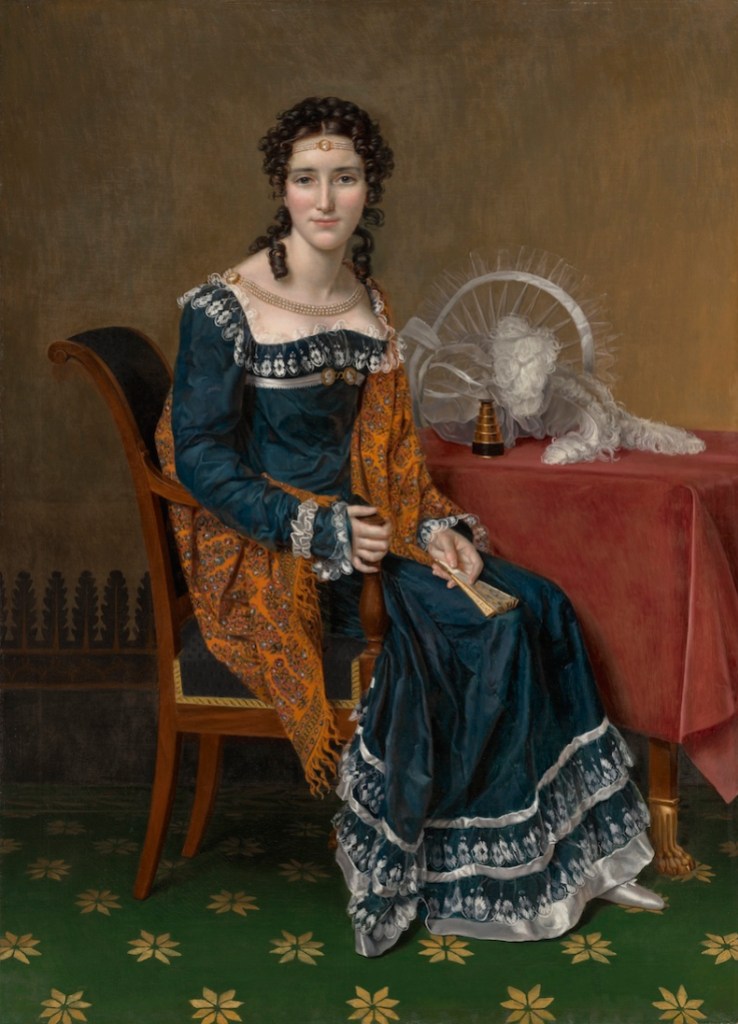
Portrait of a Woman (1818), Sophie Frémiet. The J. Paul Getty Museum, Los Angeles
National Gallery of Art, Washington, D.C.
One hundred and sixty-six photographs from the UBS art collection compiled by John Szarkowski in the 1990s; Bankers in Action (1962), Remedios Varo; two 17th-century Netherlandish decorative objects
In the 1990s, the former director of photography at MoMA John Szarkowski assembled a 300-strong collection of mostly American and Latin American photographs for the bank PaineWebber. The photos became part of the vast UBS Art Collection in 2000, and the Swiss bank has now donated 166 of these to the National Gallery of Art. The collection runs from works such as Frank Jay Haynes’s barren view of Devil’s Slide in Montana and John G Bullock’s haystacks in the late 19th century, through 20th-century titans including Alfred Stieglitz and Dorothea Lange, and ends in the 1990s with an industrial view of a quarry by Edward Burtynsky and a still life by the Mexican artist Flor Garduño. The museum has also acquired its first painting by the Spanish Surrealist Remedios Varo, whose dream-like canvases are very much in vogue, and two Netherlandish decorative objects from the 17th century: an ornate silver standing dish and a gilded nautilus cup decorated with extraordinary fish and bird motifs.
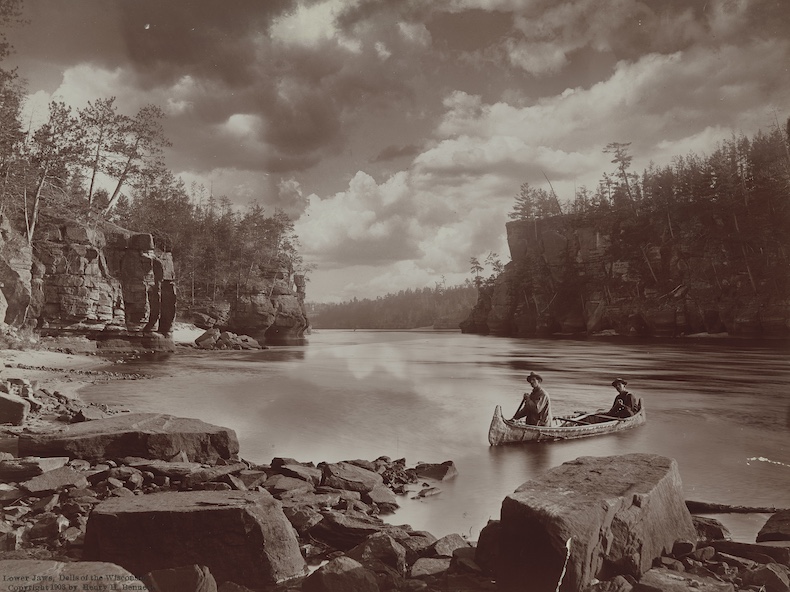
Lower Jaws, Dells of the Wisconsin (1903), Henry Hamilton Bennett. National Gallery of Art, Washington, D.C.
Musée du Louvre, Paris
Portrait of Sisters Friderike and Betty Bloem (1841), Johann Richard Seel
In another high-profile sale that took place at TEFAF Maastricht, the Louvre has announced the purchase from Texas-based Gallery 19C of the luscious Portrait of the Bloem Sisters by the 19th-century German painter Johann Richard Seel. The sisters were the daughters of Isaac Julius Bloem, a civil servant in Prussia in the early 19th century, and were painted by Seel when they were in their late teens. The Louvre is already home to Théodore Chassériau’s Two Sisters, another uncanny double portrait painted at the same time; if Chassériau’s figures are more lifelike, Seel’s canvas is brighter and more fantastical, packed with verdant plants and set in an imaginary loggia with mountains and ruins in the distant background.
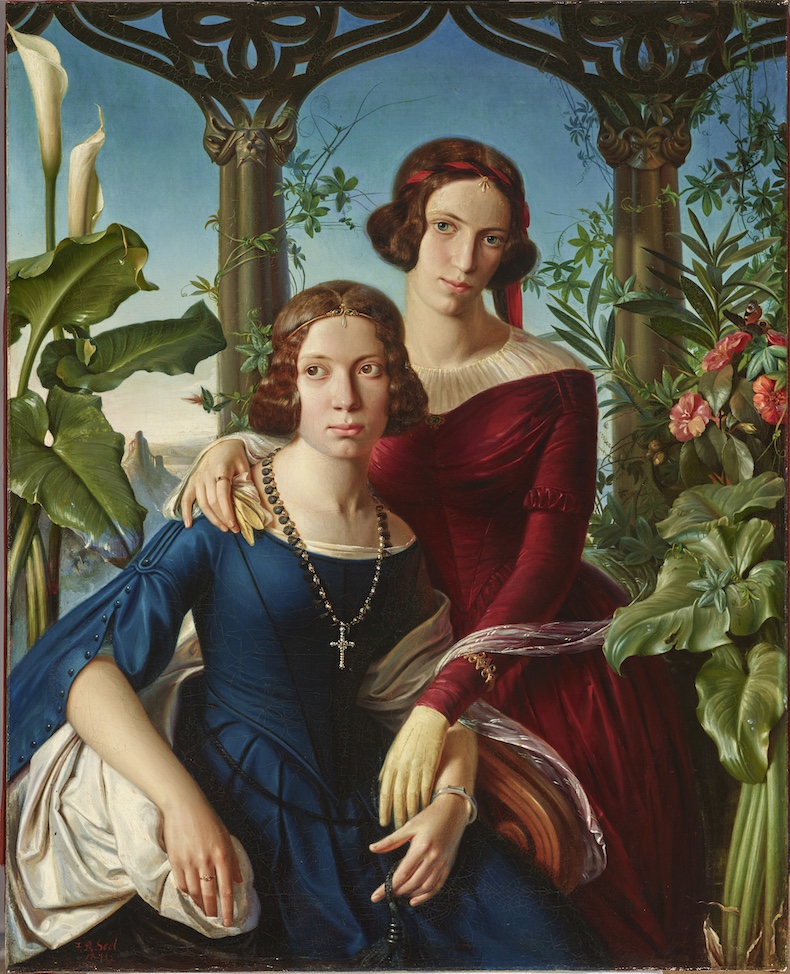
Portrait of the Bloem Sisters (1841), Johann Richard Seel. Musée du Louvre, Paris. Photo: Gallery 19C
Tate Modern, London
Gurzot ja guovssat/Spell on You! (2020), Outi Pieski; Skabmavuoddu/Spell on Me! (2024), Outi Pieski
As the Sami artist Outi Pieski’s solo exhibition at Tate St Ives ends, Tate Modern has announced the acquisition of one of the works Pieski created for the show, Skabmavuoddu/Spell on Me!, as well as its companion piece from 2020. Pieski, who lives in a remote village in northern Finland, makes colourful hanging fabric installations inspired by the landscape and traditional costume of the Sapmi region. The acquisition takes place during an uptick in interest around Indigenous art – as is clear from the make-up of this year’s Venice Biennale – and is part of the Tate’s planned four-year acquisition programme of work by Sami and Inuit artists.
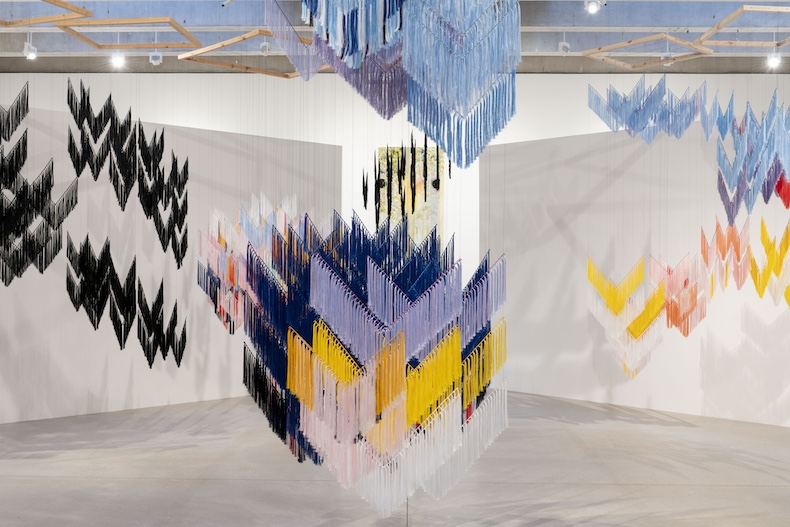
Installation view of ‘Outi Pieski’ at Tate St Ives in 2024. Photo: © Tate/Oliver Cowling; © the artist
Watts Gallery, Compton
Self-Portrait (1867), George Watts
The Watts Gallery in Surrey is dedicated to the work of George Frederic Watts, the 19th-century English artist who, in his lifetime, was acclaimed as one of the greatest painters of the age. His work includes rich Symbolist canvases as well as portraits of Thomas Carlyle, Dante Gabriel Rossetti and the actor Ellen Terry, to whom Watts was married for a short time. The museum has now acquired one of Watts’s most significant and accomplished works, a self-portrait from 1867 showing the behatted artist at the age of 50, turned towards the viewer, a contemplative look on his face. It was painted in the year Watts became a fully-fledged Academician and its acquisition – which took place through the Arts Council’s Acceptance in Lieu scheme – marks the 120th anniversary of the gallery’s opening.
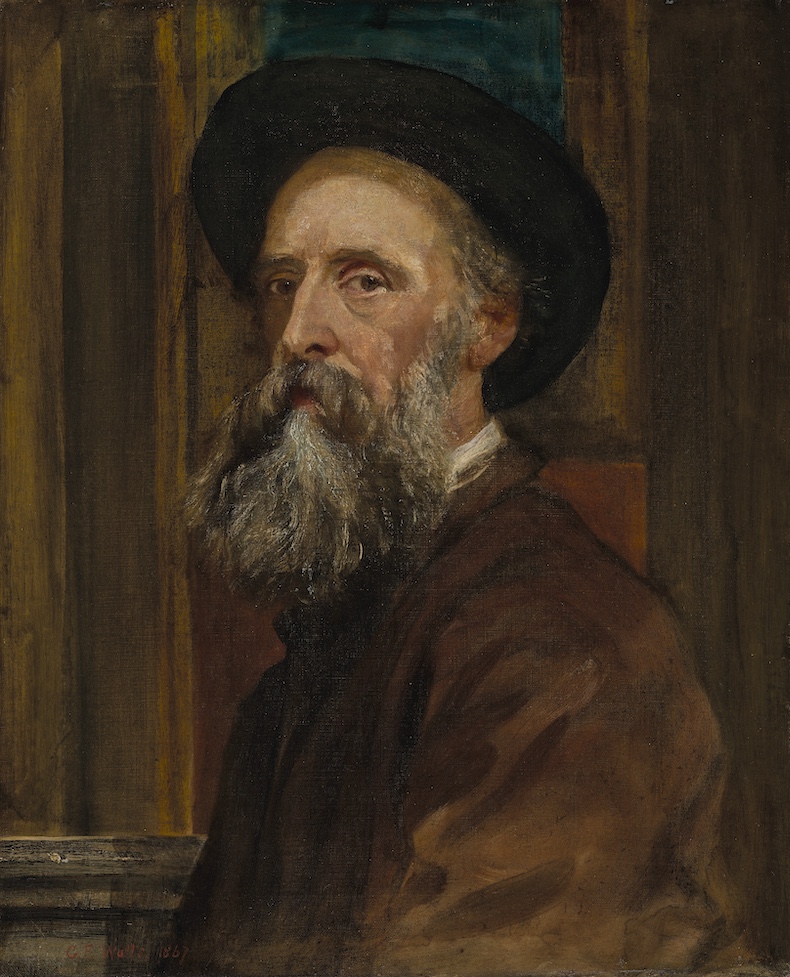
Self-portrait (1867), George Frederic Watts. Photo: © Christie’s
Unlimited access from just $16 every 3 months
Subscribe to get unlimited and exclusive access to the top art stories, interviews and exhibition reviews.


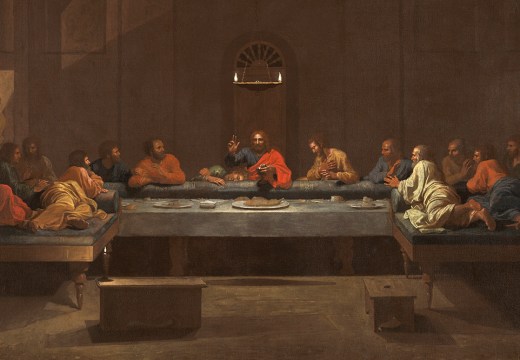











![Masterpiece [Re]discovery 2022. Photo: Ben Fisher Photography, courtesy of Masterpiece London](http://www.apollo-magazine.com/wp-content/uploads/2022/07/MPL2022_4263.jpg)
‘I am every conservator’s nightmare – that person who wants to touch the art’